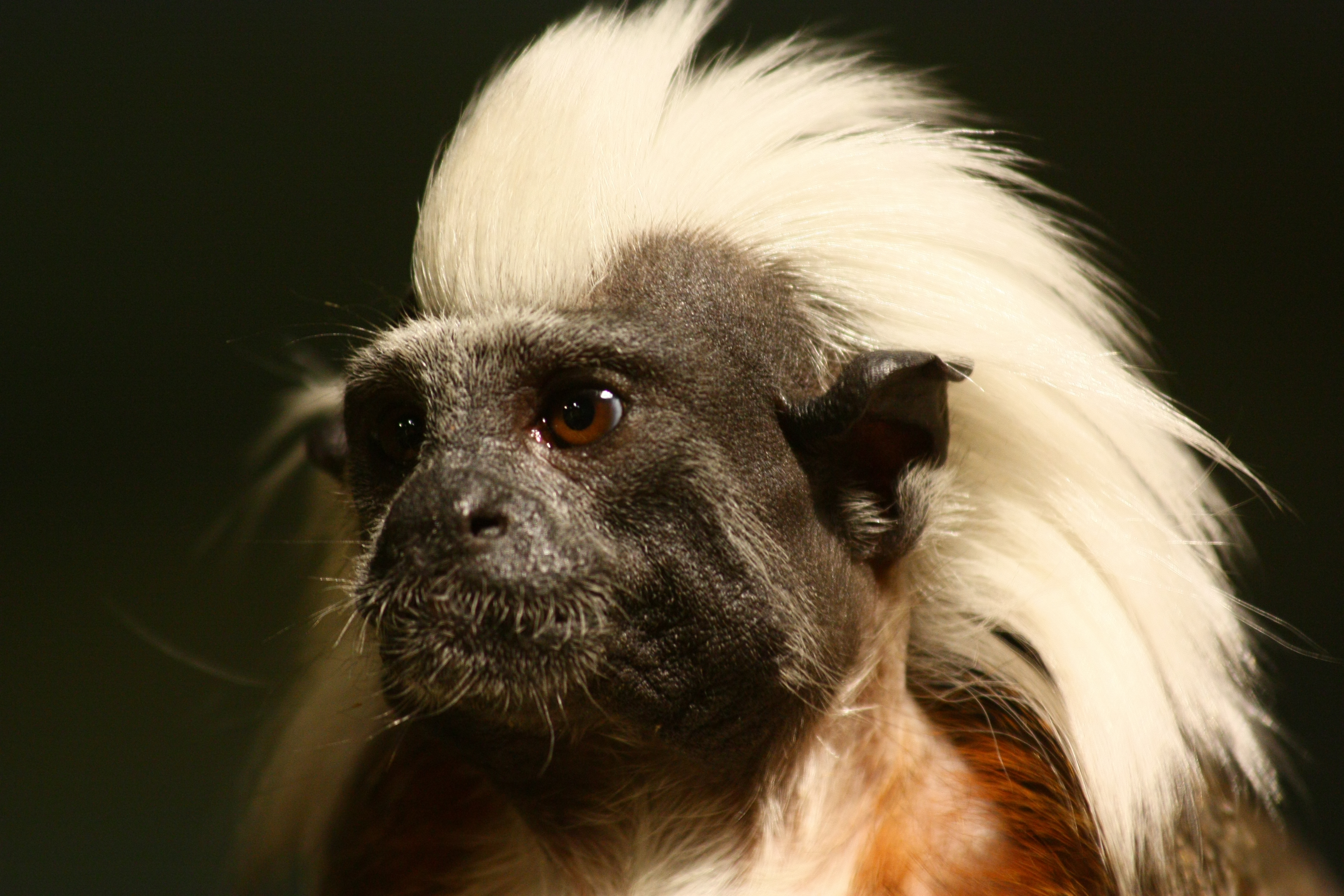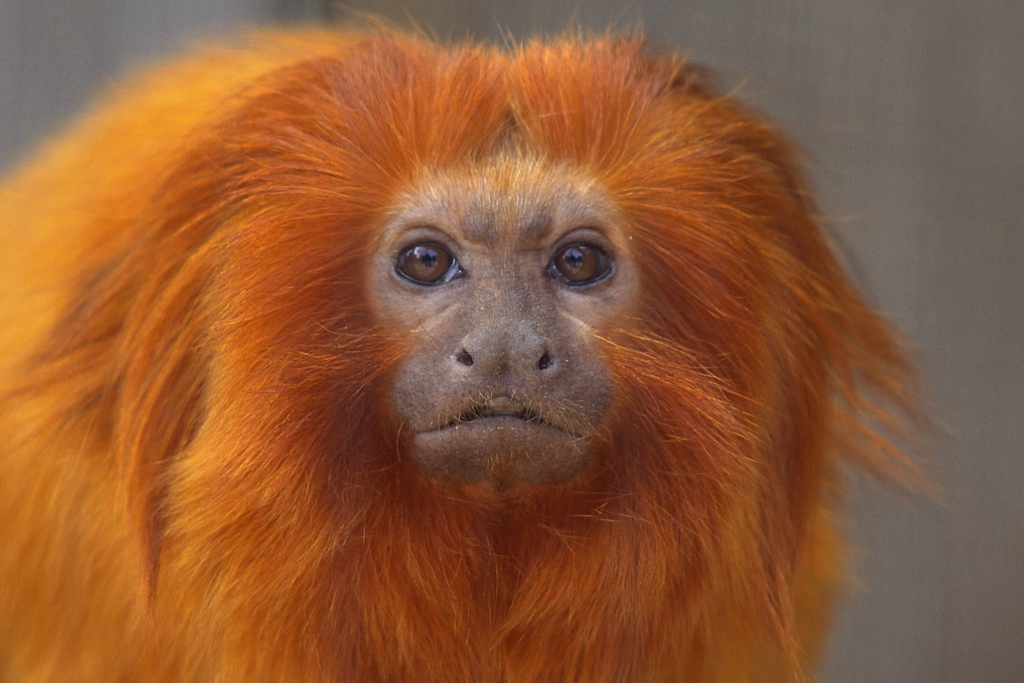|
Callitrichids
The Callitrichidae (also called Arctopitheci or Hapalidae) are a family of New World monkeys, including marmosets, tamarins, and lion tamarins. At times, this group of animals has been regarded as a subfamily, called the Callitrichinae, of the family Cebidae. This taxon was traditionally thought to be a primitive lineage, from which all the larger-bodied platyrrhines evolved. However, some works argue that callitrichids are actually a dwarfed lineage.Naish, DarrenMarmosets and tamarins: dwarfed monkeys of the South American tropics Scientific American November 27, 2012 Ancestral stem-callitrichids likely were "normal-sized" ceboids that were dwarfed through evolutionary time. This may exemplify a rare example of insular dwarfing in a mainland context, with the "islands" being formed by biogeographic barriers during arid climatic periods when forest distribution became patchy, and/or by the extensive river networks in the Amazon Basin. All callitrichids are arboreal. They are t ... [...More Info...] [...Related Items...] OR: [Wikipedia] [Google] [Baidu] |
Brown-mantled Tamarin
The brown-mantled tamarin (''Leontocebus fuscicollis''), also known as Spix's saddle-back tamarin, is a species of saddle-back tamarin. This New World monkey is found in the Southern American countries of Bolivia, Brazil and Peru. This omnivorous member of the Callitrichidae family is usually found in smaller groups ranging between 4 and 15 individuals. This species communicates vocally and largely rely their olfactory system. The brown-mantled tamarin is considered as a species of Least Concern by the International Union for Conservation of Nature, despite a decreasing population and being threatened by poaching, habitat loss and capture for the illegal pet trade. Taxonomy There are 4 subspecies: *''L. f. avilapiresi'', Avila Pires' saddle-back tamarin *''L. f. fuscicollis'', Spix's saddle-back tamarin *''L. f. mura'', Mura's saddleback tamarin *''L. f. primitivus'', Lako's saddleback tamarin Cruz Lima's saddle-back tamarin, Lesson's saddle-back tamarin, Illiger's saddle- ... [...More Info...] [...Related Items...] OR: [Wikipedia] [Google] [Baidu] |
Cotton-top Tamarin
The cotton-top tamarin (''Saguinus oedipus'') is a small New World monkey weighing less than . This New World monkey can live up to 24 years, but most of them die by 13 years. One of the smallest primates, the cotton-top tamarin is easily recognized by the long, white sagittal crest extending from its forehead to its shoulders. The species is found in tropical forest edges and secondary forests in northwestern Colombia, where it is arboreal and diurnal. Its diet includes insects and plant exudates, and it is an important seed disperser in the tropical ecosystem. The cotton-top tamarin displays a wide variety of social behaviors. In particular, groups form a clear dominance hierarchy where only dominant pairs breed. The female normally gives birth to twins and uses pheromones to prevent other females in the group from breeding. These tamarins have been extensively studied for their high level of cooperative care, as well as altruistic and spiteful behaviors. Communication ... [...More Info...] [...Related Items...] OR: [Wikipedia] [Google] [Baidu] |
Tamarin
The tamarins are squirrel-sized New World monkeys from the family Callitrichidae in the genus ''Saguinus''. They are the first offshoot in the Callitrichidae tree, and therefore are the sister group of a clade formed by the lion tamarins, Goeldi's monkeys and marmosets. Taxonomy and evolutionary history Hershkovitz (1977) recognised ten species in the genus ''Saguinus'', further divided into 33 morphotypes based on facial pelage. A later classification into two clades was based on variations in dental measurements. A taxonomic review (Rylands et al., 2016) showed the tamarins are a sister group to all other callitrichids, branching off 15–13 million years ago. Within this clade, six species groups are historically recognised, ''nigricollis'', ''mystax'', ''midas'', ''inustus'', ''bicolor'' and ''oedipus'', five of which were shown to be valid with ''Sanguinus inustus'' placed within the ''midas'' group. The review noted that the smaller-bodied ''nigricollis'' group began d ... [...More Info...] [...Related Items...] OR: [Wikipedia] [Google] [Baidu] |
Leontopithecus
The four species of lion tamarins or maned marmosets make up the genus ''Leontopithecus''. They are small New World monkeys named for the mane surrounding their face, similar to the mane of a lion. Description Living in the eastern rainforests of Brazil, like all other callitrichids they are arboreal. Lion tamarins weigh up to and are about long, with tails about long. They jump through trees using their fingers to hold on to branches; they use their claws to dig under the bark to search for insects to eat. They also eat some snakes, small lizards, and small fruits. All are endangered or critically endangered, in part because their habitat has been severely disrupted by human development and climate change. Lion tamarins tend to live in family groups, with both parents sharing different tasks of rearing the yearly twins born to them. The mother nurses her young every two to three hours, and the father carries the babies on his back. Diurnal tree-dwellers, they sleep in tr ... [...More Info...] [...Related Items...] OR: [Wikipedia] [Google] [Baidu] |
Saguinus
The tamarins are squirrel-sized New World monkeys from the family Callitrichidae in the genus ''Saguinus''. They are the first offshoot in the Callitrichidae tree, and therefore are the sister group of a clade formed by the lion tamarins, Goeldi's monkeys and marmosets. Taxonomy and evolutionary history Hershkovitz (1977) recognised ten species in the genus ''Saguinus'', further divided into 33 morphotypes based on facial pelage. A later classification into two clades was based on variations in dental measurements. A taxonomic review (Rylands et al., 2016) showed the tamarins are a sister group to all other callitrichids, branching off 15–13 million years ago. Within this clade, six species groups are historically recognised, ''nigricollis'', ''mystax'', ''midas'', ''inustus'', ''bicolor'' and ''oedipus'', five of which were shown to be valid with ''Sanguinus inustus'' placed within the ''midas'' group. The review noted that the smaller-bodied ''nigricollis'' group began di ... [...More Info...] [...Related Items...] OR: [Wikipedia] [Google] [Baidu] |
Mico (genus)
''Mico'' is a genus of New World monkeys of the family Callitrichidae, the family containing marmosets and tamarins. The genus was formerly considered a subgenus of the genus ''Callithrix''. Taxonomy ''Mico'' differs from ''Callithrix'' in dental morphology, genetics and geographic distribution: ''Callithrix'' species are distributed in eastern Brazil (mainly the Atlantic Forest), while ''Mico'' species are distributed in the Amazon Basin, Amazon south of Rio Madeira, though a single species, the black-tailed marmoset, also occurs in the Pantanal and Gran Chaco, Chaco. Roosmalens' dwarf marmoset (''Mico humilis'') was briefly considered to be a member of a new monotypic genus, ''Callibella'', due mainly to differences in size, genetics, and its bearing of a single young rather than the two that marmosets usually bear. Roosmalens' dwarf marmoset is significantly smaller than the ''Mico'' species, being about midway between the typical ''Mico'' species and the pygmy marmoset, ''Ceb ... [...More Info...] [...Related Items...] OR: [Wikipedia] [Google] [Baidu] |
Callithrix
''Callithrix'' is a genus of New World monkeys of the family Callitrichidae, the family containing marmosets and tamarins. The genus contains the Atlantic Forest marmosets. The name ''Callithrix'' is derived from the Greek words ''kallos'', meaning beautiful, and ''thrix'', meaning hair. Taxonomy The genera '' Mico'' and '' Callibella'' were formerly considered a subgenus of the genus ''Callithrix''. ''Callithrix'' differs from ''Mico'' in dental morphology and geographic distribution; ''Callithrix'' species are distributed near the Atlantic coast of Brazil, while ''Mico'' species are distributed further inland. ''Callithrix'' differs from ''Callibella'' in these features, as well as in size, with ''Callithrix'' species being significantly larger. ''Callithrix'' species differ from the tamarins of the genus '' Saguinus'' in that ''Callithrix'' has enlarged mandibular incisor teeth the same size as the canine teeth, which are used for gouging holes in trees to extract exudat ... [...More Info...] [...Related Items...] OR: [Wikipedia] [Google] [Baidu] |
Cebidae
The Cebidae are one of the five families of New World monkeys now recognised. Extant members are the capuchin and squirrel monkeys. These species are found throughout tropical and subtropical South and Central America. Characteristics Cebid monkeys are arboreal animals that only rarely travel on the ground. They are generally small monkeys, ranging in size up to that of the brown capuchin, with a body length of 33 to 56 cm, and a weight of 2.5 to 3.9 kilograms. They are somewhat variable in form and coloration, but all have the wide, flat, noses typical of New World monkeys. They are omnivorous, mostly eating fruit and insects, although the proportions of these foods vary greatly between species. They have the dental formula: Females give birth to one or two young after a gestation period of between 130 and 170 days, depending on species. They are social animals, living in groups of between five and forty individuals, with the smaller species typically forming larg ... [...More Info...] [...Related Items...] OR: [Wikipedia] [Google] [Baidu] |
Lion Tamarin
The four species of lion tamarins or maned marmosets make up the genus ''Leontopithecus''. They are small New World monkeys named for the mane surrounding their face, similar to the mane of a lion. Description Living in the eastern rainforests of Brazil, like all other callitrichids they are arboreal. Lion tamarins weigh up to and are about long, with tails about long. They jump through trees using their fingers to hold on to branches; they use their claws to dig under the bark to search for insects to eat. They also eat some snakes, small lizards, and small fruits. All are endangered or critically endangered, in part because their habitat has been severely disrupted by human development and climate change. Lion tamarins tend to live in family groups, with both parents sharing different tasks of rearing the yearly twins born to them. The mother nurses her young every two to three hours, and the father carries the babies on his back. Diurnal tree-dwellers, they sleep in tr ... [...More Info...] [...Related Items...] OR: [Wikipedia] [Google] [Baidu] |
Exudate
An exudate is a fluid emitted by an organism through pores or a wound, a process known as exuding or exudation. ''Exudate'' is derived from ''exude'' 'to ooze' from Latin ''exsūdāre'' 'to (ooze out) sweat' (''ex-'' 'out' and ''sūdāre'' 'to sweat'). Medicine An exudate is any fluid that filters from the circulatory system into lesions or areas of inflammation. It can be a pus-like or clear fluid. When an injury occurs, leaving skin exposed, it leaks out of the blood vessels and into nearby tissues. The fluid is composed of serum, fibrin, and leukocytes. Exudate may ooze from cuts or from areas of infection or inflammation. Types * Purulent or suppurative exudate consists of plasma with both active and dead neutrophils, fibrinogen, and necrotic parenchymal cells. This kind of exudate is consistent with more severe infections, and is commonly referred to as pus. * Fibrinous exudate is composed mainly of fibrinogen and fibrin. It is characteristic of rheumatic carditi ... [...More Info...] [...Related Items...] OR: [Wikipedia] [Google] [Baidu] |
Territory (animal)
In ethology, territory is the sociographical area that an animal consistently defends against conspecific competition (or, occasionally, against animals of other species) using agonistic behaviors or (less commonly) real physical aggression. Animals that actively defend territories in this way are referred to as being territorial or displaying territorialism. Territoriality is only shown by a minority of species. More commonly, an individual or a group of animals occupies an area that it habitually uses but does not necessarily defend; this is called its home range. The home ranges of different groups of animals often overlap, and in these overlap areas the groups tend to avoid each other rather than seeking to confront and expel each other. Within the home range there may be a ''core area'' that no other individual group uses, but, again, this is as a result of avoidance. Function The ultimate function of animals inhabiting and defending a territory is to increase the in ... [...More Info...] [...Related Items...] OR: [Wikipedia] [Google] [Baidu] |


.jpg)
.jpg)

.jpg)
